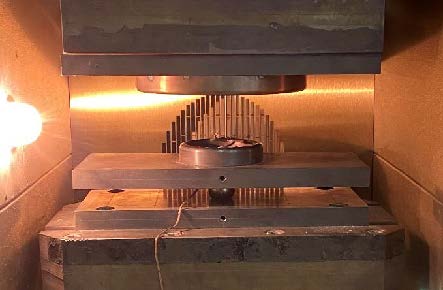Experimental Investigation into the Effect of Elevated Temperatures on the Fracture Strength of Soda-Lime-Silica Glass

Abstract
A comprehensive understanding of the fire performance of construction products is necessary to achieve fire safety of buildings. However, the behaviour of structural soda-lime-silica glass in elevated temperatures and fires is still relatively unknown. Soda-lime-silica glass is susceptible to thermal shock and its changing material properties when subjected to high temperatures makes predicting its behaviour in fire complex. This paper investigates the fracture behaviour and fracture strength of soda-lime-silica glass at elevated temperatures in a range which is relevant for e.g. early fire stages. An experimental co-axial double ring (CDR) setup was designed according to ASTM C1499-19. This setup was installed in an environmental chamber on a universal testing machine to control the temperature during the tests. First, multiple CDR tests at a controlled temperature of 25 °C were performed to get an experimental strength distribution at ambient temperatures. Second, CDR tests were performed at a controlled elevated temperature (i.e. a uniform temperature of 275 °C) to attain a distribution of the corresponding strength. A slight increase in average fracture strength was observed when increasing the temperature from 25 to 275 °C. Additionally, numerical simulations are performed to predict the behaviour of elevated temperatures on soda-lime-silica glass. These simulations are compared to the experimental results and some points of attention are raised.
Published
Issue
Section
Strength & Stability
License
Copyright (c) 2022 Evelien Symoens, Ruben Van Coile, Jan Belis

This work is licensed under a Creative Commons Attribution 4.0 International License.



